Test fields in the former uranium mining area of Ronneburg
Gessenwiese
The Gessenwiese test site was established in 2004 to develop bioremediation processes and to better understand the distribution of potentially toxic trace elements in the soil-water-plant system.
In 2015, as part of the USER and USER II projects, 9 subplots were created to test the concept of phytostabilisation in combination with the production of usable biomass. The soil was mechanically homogenised and treated with calcareous soil substrate (Rendzina) and/or microbial amendments such as mycorrhiza and streptomycetes in various combinations (Fig. 1). A short-rotation plantation of birch, alder and willow was established in 2016 to provide biomass and stabilise contaminants in the root zone (Fig. 2). In 2019 and 2021, all above-ground biomass was manually harvested, weighed and analysed for metal/radionuclide content. Another harvest is planned for early 2025. Regular drone flights are carried out to automatically determine the growth height using LIDAR (Figures 3 and 4). For regular monitoring of colloidal phases and element concentrations in the water phase, groundwater measuring points, lysimeters and a suction probe system for pore water sampling are available on the Gessenwiese.
-
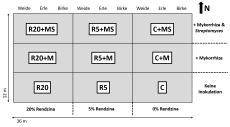
Fig. 1: Layout of the Gessenwiese test field (modified from Nettemann, 2024).
Graphic: Sarah Nettemann -
Fig. 2: The 9 subplots after tree planting in spring 2016.
Image: Daniel Mirgorodsky -
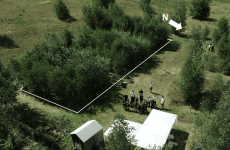
Fig. 3 Drone image of the test field including the 9 subplots in August 2024. The photo was taken as part of the annual practical course of the Bachelor of Biogeosciences. The extent of the 9 subplots is outlined in white.
Image: Geospector -
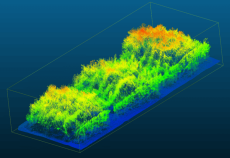
Fig. 4: 3D view generated from laser point data from the drone flight in August 2024. Tree heights were coloured in the CloudCompare software.
Graphic: Sarah Nettemann
Kanigsberg
As part of the USER/USER II projects, three further test plots were established on the former Kanigsberg tailings pile (Fig. 5). At the 'Bareground' site, a bioremediation concept similar to that at Gessenwiese is being tested, using Rendzina additives and inoculation with mycorrhizae and streptomycetes. Birch, alder and willow have also been planted.
In addition to birch, alder and willow, the 'slope' and 'plateau' plots are planted with pine and rowan with various understorey species (Fig. 6). Soil treatment is based solely on the addition of mycorrhiza and/or streptomycetes. The 'slope' test field also serves as a test area for observing the erosion-reducing effect of planting on slag heaps. All above-ground biomass was manually harvested, weighed and analysed for metal/radionuclide content at Kanigsberg in 2021. Another harvest is planned for early 2025.
-
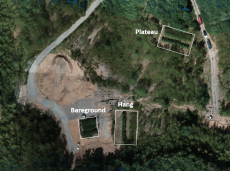
Fig. 5: View of the Bareground, Hang and Plateau Test Fields on the Kanigsberg taken by drone in August 2024.
Image: Geospector -
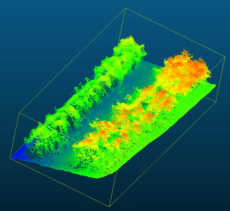
Fig. 6: 3D view of the 'Hang' test plot generated from laser point data from the drone flight in August 2024. Tree heights are coloured in the CloudCompare software. Only the pines and birches showed significant growth in the 2nd growth phase.
Graphic: Sarah Nettemann